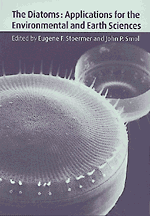Book contents
- Frontmatter
- Contents
- Contributors
- Preface
- Part I Introduction
- Part II Diatoms as indicators of environmental change in flowing waters and lakes
- 2 Assessing environmental conditions in rivers and streams with diatoms
- 3 Diatoms as indicators of hydrologic and climatic change in saline lakes
- 4 Diatoms as mediators of biogeochemical silica depletion in the Laurentian Great Lakes
- 5 Diatoms as indicators of surface water acidity
- 6 Diatoms as indicators of lake eutrophication
- 7 Continental diatoms as indicators of long-term environmental change
- 8 Diatoms as indicators of water level change in freshwater lakes
- Part III Diatoms as indicators in extreme environments
- Part IV Diatoms as indicators in marine and estuarine environments
- Part V Other applications
- Part VI Conclusions
- Glossary, and acronyms
- Index
5 - Diatoms as indicators of surface water acidity
Published online by Cambridge University Press: 16 January 2010
- Frontmatter
- Contents
- Contributors
- Preface
- Part I Introduction
- Part II Diatoms as indicators of environmental change in flowing waters and lakes
- 2 Assessing environmental conditions in rivers and streams with diatoms
- 3 Diatoms as indicators of hydrologic and climatic change in saline lakes
- 4 Diatoms as mediators of biogeochemical silica depletion in the Laurentian Great Lakes
- 5 Diatoms as indicators of surface water acidity
- 6 Diatoms as indicators of lake eutrophication
- 7 Continental diatoms as indicators of long-term environmental change
- 8 Diatoms as indicators of water level change in freshwater lakes
- Part III Diatoms as indicators in extreme environments
- Part IV Diatoms as indicators in marine and estuarine environments
- Part V Other applications
- Part VI Conclusions
- Glossary, and acronyms
- Index
Summary
Introduction
Lake acidification became an environmental issue of international significance in the late 1960s and early 1970s when Scandinavian scientists claimed that ‘acid rain’ was the principal reason why fish populations had declined dramatically in Swedish and Norwegian lakes (Odén, 1968; Jensen & Snekvik, 1972; Almer et al., 1974). Similar claims were being made at about the same time in Canada (Beamish & Harvey, 1972). However, these claims were not immediately accepted by all scientists. It was argued instead that acidification was due to natural factors or to changes in catchment land-use and management (Rosenqvist 1977, 1978; Pennington 1984; Krug & Frink, 1983).
In the scientific debate that followed, diatom analysis played a pivotal role. It enabled the timing and extent of lake acidification to be reconstructed (Charles et al., 1989; Battarbee et al., 1990; Dixit et al., 1992a) and allowed the various competing hypotheses concerning the causes of lake acidification to be evaluated (Battarbee et al., 1985; Battarbee & Charles 1994; Emmett et al., 1994). However, diatoms had been recognized and used as indicators of water pH well before the beginning of this controversy. The ‘acid rain’ issue served to highlight the importance of diatoms and stimulated the advance of more robust and sophisticated techniques, especially the development of transfer functions for reconstructing lakewater pH and related hydrochemical variables.
This chapter outlines the history of diatoms as pH indicators, and describes how diatoms are currently used in studies of acid and acidified waters.
- Type
- Chapter
- Information
- The DiatomsApplications for the Environmental and Earth Sciences, pp. 85 - 127Publisher: Cambridge University PressPrint publication year: 1999
- 64
- Cited by



